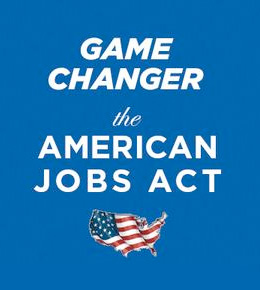Big Manager Finally Advertises, But Will it Really Change Anything?
 Since the JOBS Act was passed in September of 2013, all of us PR professionals have been wondering why there isn't anyone taking advantage of the advertising ban lift. In fact, business has virtually stayed status quo since September, and when asked about advertising, all managers, both big and small, seem to give the same answer: a scoff. But when we prod more and read between the lines, the real answer seems to be that everyone is waiting to see what everyone else is going to do first. No one wants to be the first firm to test the waters; they're waiting for someone else to be the guinea pig.
Since the JOBS Act was passed in September of 2013, all of us PR professionals have been wondering why there isn't anyone taking advantage of the advertising ban lift. In fact, business has virtually stayed status quo since September, and when asked about advertising, all managers, both big and small, seem to give the same answer: a scoff. But when we prod more and read between the lines, the real answer seems to be that everyone is waiting to see what everyone else is going to do first. No one wants to be the first firm to test the waters; they're waiting for someone else to be the guinea pig.
TopTurn Capital, a small California hedge fund, took the plunge in December, but it was brushed off by most as a small emerging manager trying to get capital. And though there was some chatter initially, it died down after a few stories and that seemed to be the end of it. It seemed as if no one was going to advertise.
Well that was until recently. This month, Balyasny Asset Management, the Chicago-based hedge fund with $4.3 billion in assets under management (AUM), took out a half-page ad in Pensions & Investments. Since being published earlier this month, the ad has received substantial notice, including a large story in The New York Times today calling it "the boldest example yet of a hedge fund taking advantage" of the ban lift. And the reason there is so much chatter is because managers view Balysany as an established firm, as it has surpassed the "$1 billion, we've made it, mark."
And even though we all expected this to happen at some point, many of us are still amazed someone has decided to be the true guinea pig. Despite Balyasny's foray into unexplored territory, observers are still skeptical if anyone else is going to follow suit. Here is why:
- Balyasny is viewed as an established manager, but it is not a household name in the industry. Managers still may not think a credible enough firm has tested the waters and will wait for a bigger name.
- For example: word on the street is this was all the talk at a recent hedge fund event but no one could remember the name of the firm who did it.
- Though the ban has been lifted, the rules governing advertising still have not been written, and therefore, many managers would rather wait to know what they can and cannot do instead of taking the chance of being hit by the SEC.
- Additionally, all firms involved in the futures market still need to adhere to the CFTC, which adds another layer of regulations and hesitation.
- Finally, and probably most importantly, hedge funds are widely viewed by the public as elite. There is definitely a desire amongst the industry to stay this way, as The New York Times writes, the industry "has long benefited from the appearance of exclusivity." And we all know the number one rule when it comes to being elite is being discreet, you want investors referred by word of mouth not to be seen as an "ambulance chaser."
So stay tuned for the next hedge fund advertising development. Who do you think be the next brave contestant? ![]()
